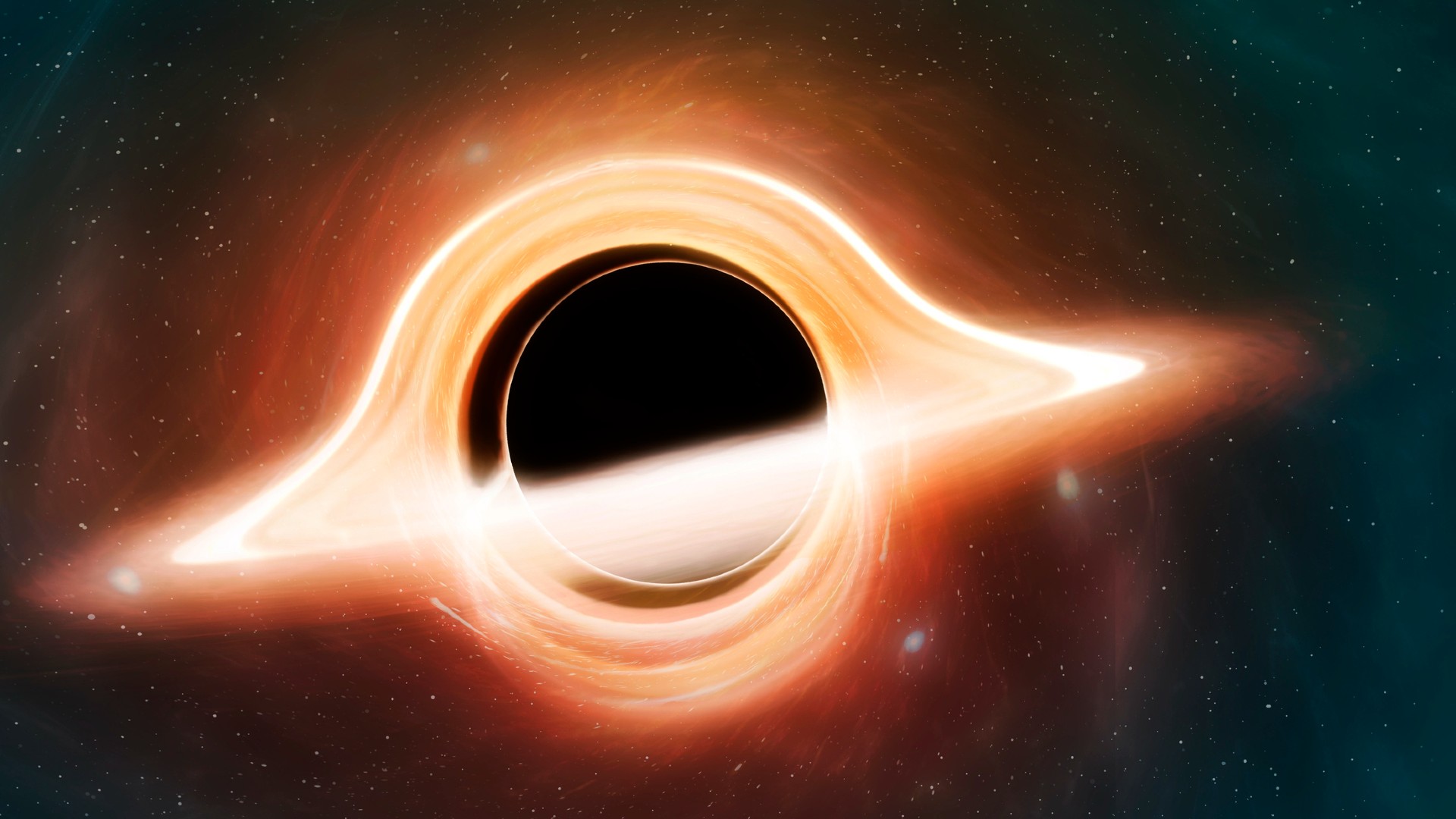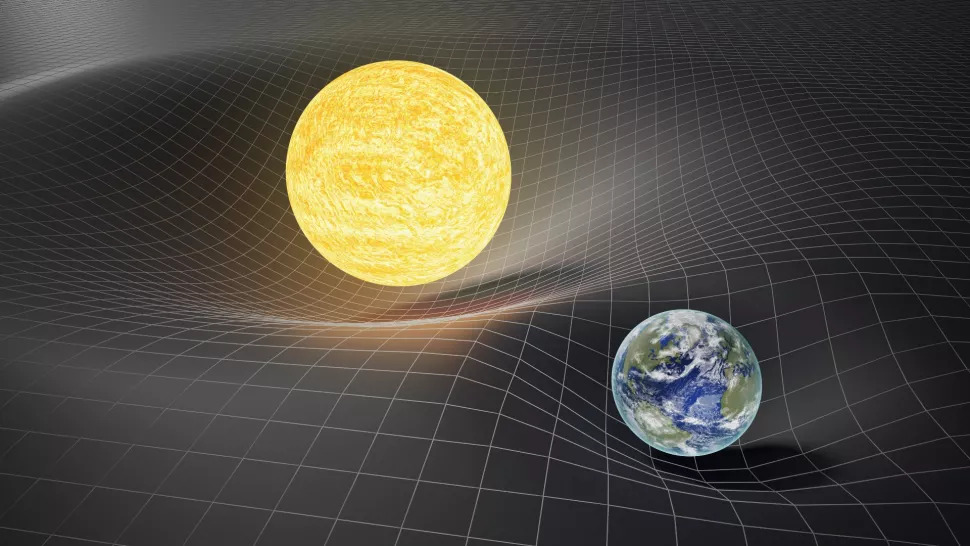
This article was originally published at The Conversation. The publication contributed the article to Space.com's Expert Voices: Op-Ed & Insights.
Sam Baron, Associate Professor, Philosophy of Science, Australian Catholic University
Black holes form natural time machines that allow travel to both the past and the future. But don't expect to be heading back to visit the dinosaurs any time soon.
At present, we don't have spacecraft that could get us anywhere near a black hole. But, even leaving that small detail aside, attempting to travel into the past using a black hole might be the last thing you ever do.
Related: Hungry black hole is transforming star into a stellar taffy and a cosmic donut
What are black holes?
A black hole is an extremely massive object that is typically formed when a dying star collapses in on itself.
Like planets and stars, black holes have gravitational fields around them. A gravitational field is what keeps us stuck to Earth, and what keeps Earth revolving around the sun.
Get the Space.com Newsletter
Breaking space news, the latest updates on rocket launches, skywatching events and more!
As a rule of thumb, the more massive an object is, the stronger its gravitational field.
Earth's gravitational field makes it extremely difficult to get to space. That's why we build rockets: we have to travel very fast to break out of Earth's gravity.
The gravitational field of a black hole is so strong that even light can't escape it. That's impressive since light is the fastest thing known to science!
Incidentally, that's why black holes are black: we can't bounce light off a black hole the way we might bounce a flashlight's beam off a tree in the dark.
Stretching space
Albert Einstein's general theory of relativity tells us matter and energy have a curious effect on the universe. Matter and energy bend and stretch space. The more massive an object is, the more space is stretched and bent around it.
A massive object creates a kind of valley in space. When objects come near, they fall into the valley.

That's why, when you get close enough to any massive object, including a black hole, you fall toward it. It's also why light can't escape a black hole: the sides of the valley are so steep that light isn't going fast enough to climb out.
The valley created by a black hole gets steeper and steeper as you approach it from a distance. The point at which it gets so steep that light can't escape is called the event horizon.
Event horizons aren't just interesting for would-be time travelers: they're also interesting for philosophers because they have implications for how we understand the nature of time.
Stretching time
When space is stretched, so is time. A clock that is near a massive object will tick slower than one that is near a much less massive object.
A clock near a black hole will tick very slowly compared to one on Earth. One year near a black hole could mean 80 years on Earth, as you may have seen illustrated in the movie "Interstellar."
In this way, black holes can be used to travel to the future. If you want to jump into the future of Earth, simply fly near a black hole and then return to Earth.
If you get close enough to the center of the black hole, your clock will tick slower, but you should still be able to escape so long as you don't cross the event horizon.
Loops in time
What about the past? This is where things get truly interesting. A black hole bends time so much that it can wrap back on itself.
Imagine taking a sheet of paper and joining the two ends to form a loop. That's what a black hole seems to do to time.
This creates a natural time machine. If you could somehow get onto the loop, which physicists call a closed timelike curve, you would find yourself on a trajectory through space that starts in the future and ends in the past.
Inside the loop, you would also find that cause and effect get hard to untangle. Things that are in the past cause things to happen in the future, which in turn causes things to happen in the past!
The catch
So, you've found a black hole and you want to use your trusty spaceship to go back and visit the dinosaurs. Good luck.
There are three problems. First, you can only travel into the black hole's past. That means that if the black hole was created after the dinosaurs died out, then you won’t be able to go back far enough.
Second, you'd probably have to cross the event horizon to get into the loop. This means that to get out of the loop at a particular time in the past, you'd need to exit the event horizon. That means traveling faster than light, which we're pretty sure is impossible.
Third, and probably worst of all, you and your ship would undergo "spaghettification." Sounds delicious, right?
Sadly, it's not. As you crossed the event horizon you would be stretched flat, like a noodle. In fact, you'd probably be stretched so thin that you'd just be a string of atoms spiraling into the void.
So, while it's fun to think about the time-warping properties of black holes, for the foreseeable future that visit to the dinosaurs will have to stay in the realm of fantasy.
This article is republished from The Conversation under a Creative Commons license. Read the original article.
Join our Space Forums to keep talking space on the latest missions, night sky and more! And if you have a news tip, correction or comment, let us know at: community@space.com.

Dr Baron's present research focuses on the connection between key topics in the philosophy of mathematics concerning mathematical ontology, and topics in the philosophy of time concerning temporal ontology. A central focus of this research is the role of truthmaking and non-causal explanation in arguments both for and against particular ontological views.
Dr Baron is currently investigating the role of non-causal explanation in the indispensability argument for the existence of mathematical objects, as well as timelessness in theories of quantum gravity and timelessness in metaphysics more generally.
-
Pentcho Valev Gravitational time dilation does not exist because, in a gravitational field, light falls as posited by Newton's theory:Reply
James Hartle, Gravity: An Introduction to Einstein's General Relativity, p. 113: "If we accept the equivalence principle, we must also accept that light falls in a gravitational field with the same acceleration as material bodies."
Paul A. Tipler, Ralph A. Llewellyn, Modern Physics: "A beam of light will accelerate in a gravitational field as do objects with rest mass. For example, near the surface of Earth light will fall with acceleration 9.8 m/s^2."
This implies that the variation of the speed of falling light is proportional to the variation of frequency (proved by the Pound-Rebka-Snider experiment):
Max Planck Institute for Gravitational Physics: "You do not need general relativity to derive the correct prediction for the gravitational redshift. A combination of Newtonian gravity, a particle theory of light, and the weak equivalence principle (gravitating mass equals inertial mass) suffices...The gravitational redshift was first measured on earth in 1960-65 by Pound, Rebka, and Snider at Harvard University..."
R. V. Pound and J. L. Snider, Effect of Gravity on Gamma Radiation: "It is not our purpose here to enter into the many-sided discussion of the relationship between the effect under study and general relativity or energy conservation. It is to be noted that no strictly relativistic concepts are involved and the description of the effect as an "apparent weight" of photons is suggestive. The velocity difference predicted is identical to that which a material object would acquire in free fall for a time equal to the time of flight."
Variation of the speed of falling light as per Newton's theory implies NO GRAVITATIONAL TIME DILATION.










